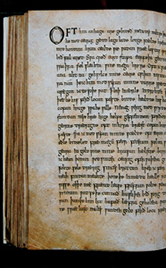What is the Printing Operations Code of Practice?

The Printing Code of Practice is a regulation for managing waste materials generated by printing operations. Printing operations in the Region must follow the code. Printing wastes can include:
- Cleaning Solvents
- Petroleum products
- Heavy metals
- Ink and fountain solutions
- Acid bath solutions
Printing operations include businesses that engage in:
- Lithography
- Gravure or rotogravure
- Flexography
- Screen printing
- Letter press
Why are printing wastes a concern in our environment?
Liquid wastes from printing processes such as inks, fountain wash solutions, rinse water from equipment that has been washed in solvent, flexography plate acid bath solutions, etching solutions and wash-out solutions can negatively effect sewer pipes and treatment works and pose a health hazard to humans and to the environment.
Wastewater from printing operations can also contain quantities of solids, heavy metals, oils and grease and chlorinated solvents that exceed CRD Sewer Use Bylaw levels. Some may be toxic even in very low concentrations.
Printing chemicals can be a health hazard; they can also create hazards such as fire, explosion, air and water pollution, corrosion of sewer pipes or damage to sewage treatment facilities. The code of practice was created to ensure safe disposal of these materials.
What can printing operators do?
Printing wastes are regulated by all levels of government. Operators are responsible for understanding and adhering to every regulation set out by each level of government.
Heavy metals and other contaminants are now much less common in the waters off our region, thanks in large part to source control efforts. Continued effort will ensure our ocean is cleaner and safer for everyone.
By following the printing regulations you will protect our environment, reduce your own liability and provide a greener, improved business image in your community. Regulations require that printers:
- Not discharge prohibited waste into the sewer system
- Not discharge wastewater which contains:
- rinse water from equipment that has been washed in solvent
- inks and fountain solutions
- flexography plat acid bath solutions, etching solutions and wash-out solutions
- cleaning solvents
- Install treatment works to treat liquid wastes or collect and transport prohibited and restricted wastes for offsite management
- Perform inspections and maintenance of treatment works
- Create a spill response plan
- Maintain written records
Create an Environmentally Sustainable Business
Other wastes from printing facilities can also be a concern. Follow the pollution prevention principles outlined in the guide book.
- Choose products with less packaging and those made from recycled materials
- Work to minimize the amount of waste ink your business produces
- Recycle as much non-hazardous waste as possible
- Keep machines and storage areas clean and well-maintained
By reducing waste overall and disposing of waste in the proper manner, you can help protect our region's environment.